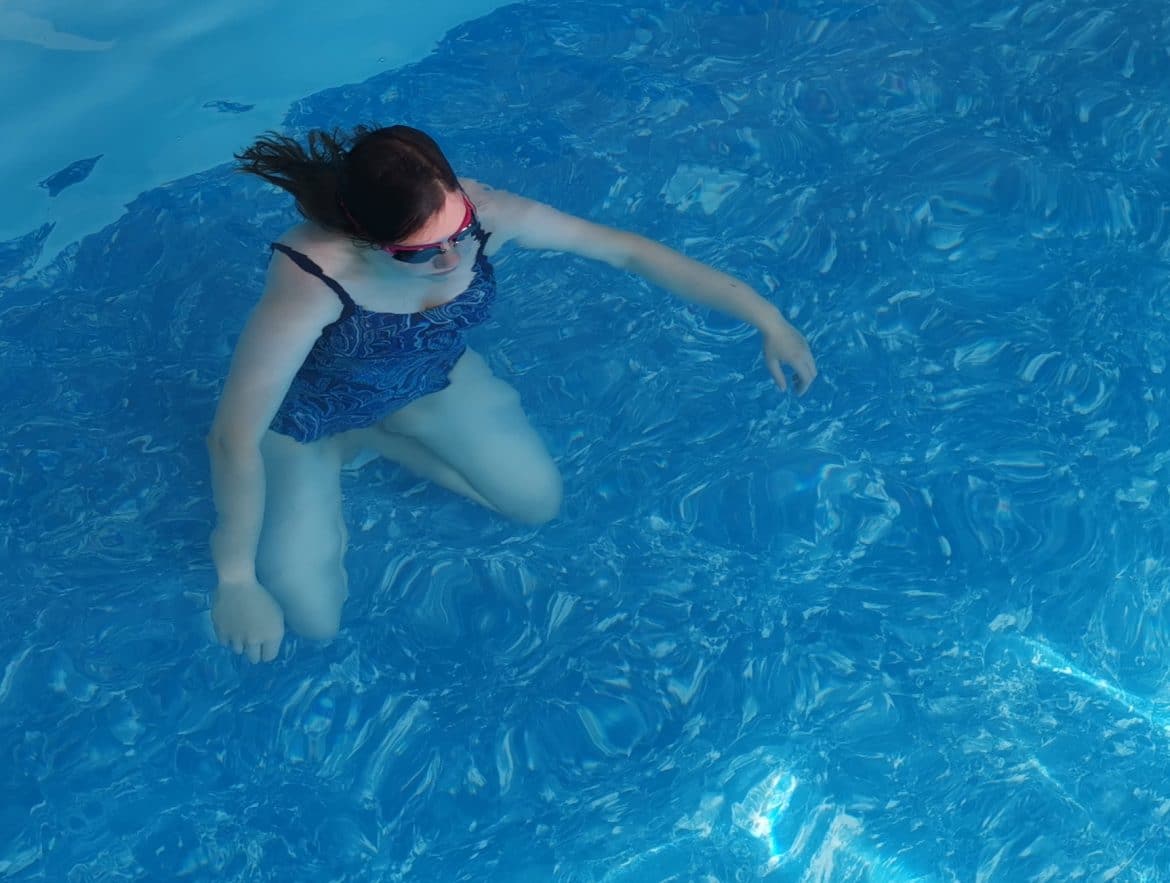On how we help non-swimmers
‘I just want to feel comfortable in water,’ Karen told us on her first day.
We always like to hear this, from a non-swimmer, because it’s the main objective we want to help non-swimmers achieve. Sometimes it can be clouded by a keenness to swim, to be a swimmer. So it’s important not to lose sight of it.
This is why I value floating face down above everything else. I find it useful to make a distinction between floating and gliding, which immediately encompasses the idea of moving forward through the water, swimming.
By floating I really mean letting yourself sink, until you can sink no more, even if this means resting on the floor. I don’t mean doing anything to try and make yourself float.
If you’re a woman, you’ll never sink to the floor. Your legs might float so high they break the surface, initially causing you to feel out of control, like you’re losing your balance. You need to let them come up and get used to this instead of trying to stop them. If you’re a man like me whose feet stay on the floor, or a man with an athletic body that sinks all the way to the floor, you’ll discover it isn’t anything you’re doing wrong, or to worry about. You need to know what happens when you do nothing.
When you give yourself to the water you will move forward a bit, but you don’t want to be motivated by the goal of getting to something in front of you – the wall, the steps, your teacher. Trying to move forward is too much like swimming, which has to be put on hold until you can let yourself go. Otherwise, right from the start, the water is an obstacle to overcome.
The moment you give it all up and submit to the water, you’ve done the business and you start to feel like you belong. That’s what’s been missing. There’s a completeness in floating, it isn’t the first step, it’s everything!
For a non-swimmer, this can all seem very challenging, mentally tough. It requires a lot of thought and courage, maybe a sleepless night or two. And you may not be ready to do it without hands-on contact for some time. But so long as this contact is helping you go deeper, do nothing, feel more supported by water, that’s ok, and it takes as long as it takes.
As a learner, you have to get rid of the idea that you have to do anything, to get somewhere. And as a teacher you have to make sure you’re not reinforcing this idea, with or without your hands.
In Karen’s last lesson (video clip above was the previous day) she really floated and just hung there, enjoying it, until her feet came back to the ground almost by themselves, without any contact from me. She said, ‘You and Cheryl take the swimming out of swimming’. We were pleased to hear that.
In Karen’s own words
I’d had swimming lessons before when someone stood on the side of the pool in their nice dry clothes shouting ‘kick’! That’s not what you want to hear when you have a fear of the water!! Cheryl and Ian are in the water with you every step of the way. They listen to your fears and phobias and help you through them, helping you understand that the water is there to support you. Don’t get me wrong I was still petrified to start with but their technique is unique and gives you the understanding of how the water can be your friend. I never thought I would be able to feel relaxed but when you do it’s a marvellous feeling. I can now go on holiday with my grandson and when I get in the pool with him I will have Ian and Cheryl in my head letting me enjoy the experience. They really do take the swimming out of swimming and make the water something to be embraced not feared.


